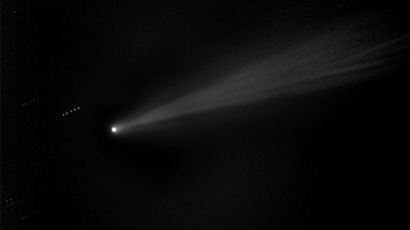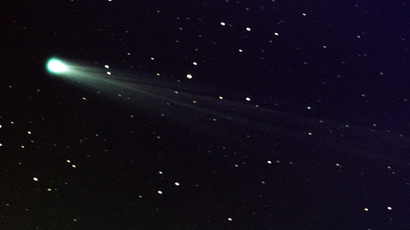Massachusetts physicist claims he solved mystery of how life emerged from matter

The origin of life is often attributed to luck or labeled as some kind of miracle, but one physicist believes that under the right conditions the creation of life is predictably unavoidable.
According to Jeremy England, an assistant professor at the Massachusetts Institute of Technology, matter naturally reorganizes itself to acquire the crucial physical characteristic of life – the ability to disperse great quantities of energy – when driven by an outside source such as the sun and bathed in the right atmospheric or oceanic conditions.
As the 31-year-old physicist explained to the science publication Quanta Magazine, if that’s the case, if matter consistently changes to disperse more and more energy, then the existence of life“should be as unsurprising as rocks rolling downhill.”
“You start with a random clump of atoms, and if you shine light on it for long enough, it should not be so surprising that you get a plant,” England said.
The new theory posits that matter is most likely to react to the external energy sources that are bearing down on it. If a particular energy source is constantly surrounding a group of atoms, over time they will inevitably restructure themselves to better consume and disperse the energy around them. This process, England proposes, is the driving force that ultimately led to life.

If correct, the theory could push biologists to view the various forms of life as different methods to disperse energy, and remove the need to define every adaptation within the lens of natural selection.
Still, England said his theory is meant to work alongside Darwin’s, not undermine or replace it.
“I am certainly not saying that Darwinian ideas are wrong,” he told Quanta. “On the contrary, I am just saying that from the perspective of the physics, you might call Darwinian evolution a special case of a more general phenomenon.”
England pointed to plants as a great example of energy dissipaters, since they take in the energy around them, use it to sustain themselves, and disperse even more energy into their environment in the form of infrared light.
As various forms of matter seek to disperse more energy over long periods of time, they would naturally start to replicate or reproduce, since replication itself disperses as much energy as it uses up – at least on the level of RNA molecules and bacteria.
“A great way of dissipating more [energy] is to make more copies of yourself,” England said.
Although the underlying idea behind England’s theory – that energy dispersion is the central force guiding natural processes that include life – is unproven, it’s generating a lot of interest from skeptical and excited scientists alike who are looking to test the idea further.
Still, this theory marks the second potential physics breakthrough in two months. In December, RT reported on the new findings by a scientific team in Japan that were touted as the “clearest evidence yet” that our universe is actually a holographic 3D projection of a two-dimensional space.













